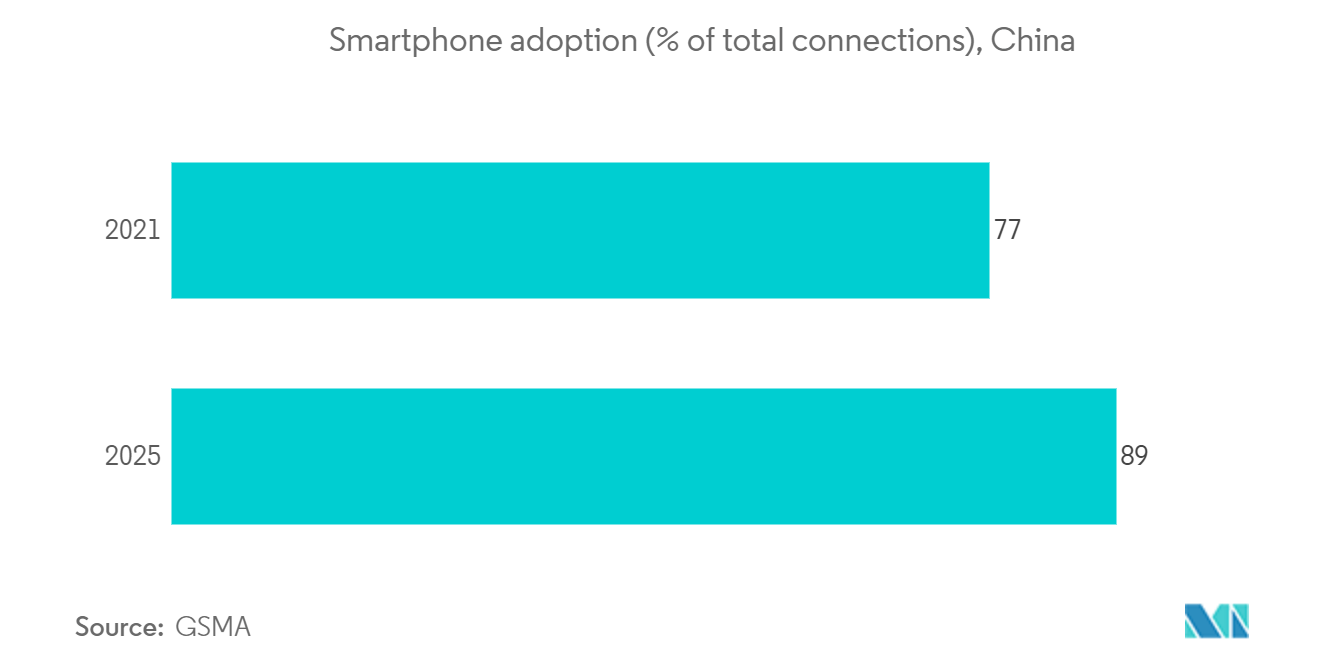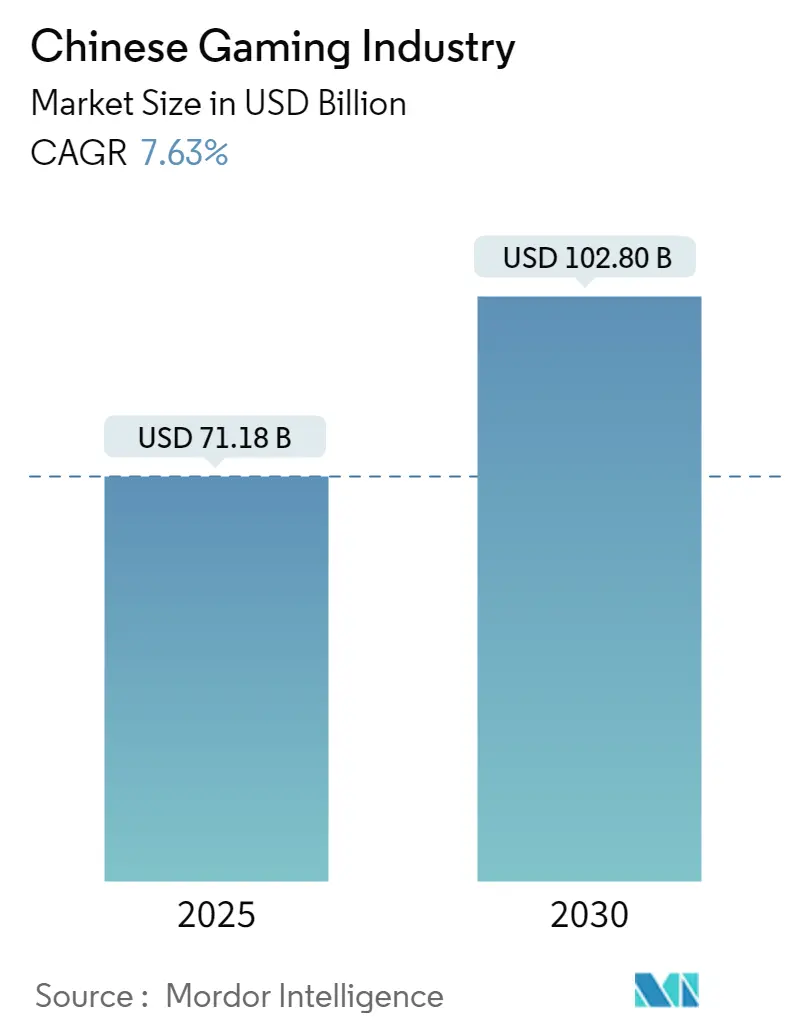
| Study Period | 2022 - 2030 |
| Base Year For Estimation | 2024 |
| Forecast Data Period | 2025 - 2030 |
| Market Size (2025) | USD 71.18 Billion |
| Market Size (2030) | USD 102.80 Billion |
| CAGR (2025 - 2030) | 7.63 % |
| Market Concentration | Medium |
Major Players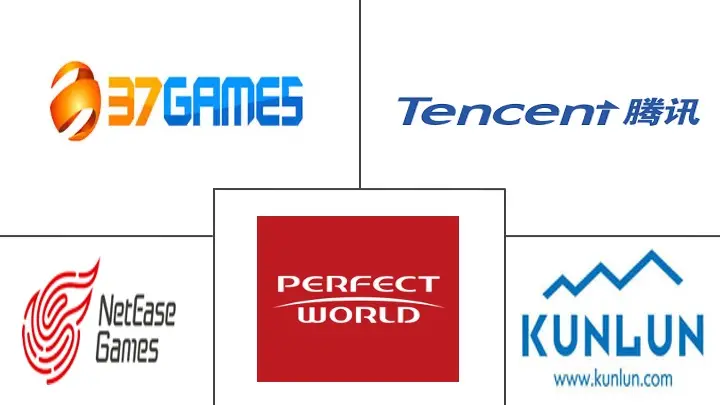
*Disclaimer: Major Players sorted in no particular order |
China Gaming Market Analysis
The Chinese Gaming Industry is expected to grow from USD 71.18 billion in 2025 to USD 102.80 billion by 2030, at a CAGR of 7.63% during the forecast period (2025-2030).
China is one of the most lucrative markets for the gaming industry. Several international companies are entering the market by acquiring shares from Chinese gaming vendors or sponsoring professional players' teams. One of the primary reasons for the growth of the gaming industry in China is the rapidly rising popularity of eSports, a competitive part of the gaming industry where various players participate in gaming competitions. The entire game tournament is broadcasted online.
With Chinese enterprises ready to embrace business opportunities provided by global digitalization, companies across the region are leveraging digital transformation throughout the product cycle, especially to enhance their production efficiency. For instance, Tencent Games announced seven projects in June, including game technology collaboration. These consist of the digital Great Wall of China, the Library Cave of Dunhuang, the Beijing Central Axis, the Chasing All Transients Constellation Hunters (CATCH) program, Full Flight Simulator (FFS), 3D full-fidelity digital factory, and a game-driven robot intelligent learning project.
The rapid growth in mini-games played inside mobile apps, such as WeChat, without installing another application, is witnessing the rapid adoption of China's gaming industry. These mini-games, which have active social elements, are easy to play and have attracted many followers across the country.
The modernization of cable networks is also a potential driver of China's gaming market growth. With the adoption of DOCSIS 3, which achieves download speeds as high as 100 Mbps, cable operators offer high-performance cloud gaming services in China.
Additionally, the increasing prevalence of cloud infrastructure provides abundant computing, storage, and communication resources in a reliable, cost-effective, and low-maintenance manner. Various gaming applications will employ these cloud computing resources, as gaming services stand to be one of China's fastest-growing sectors for cloud computing.
The impacts of COVID-19 resulted in in-game delays and scope scale-downs expected to prevent the console gaming sector from witnessing the same gains as a mobile platform. COVID-19 ravaged China, but businesses whose infrastructure is based on online ad sales and in-game purchases were hit less (source Lyndon Gaming). But the pandemic has fundamentally shifted how much revenue ad sales and in-game purchases bring in. Chinese game designers are adjusting their monetization models to lessen the impact on their revenue streams.
China Gaming Market Trends
Mobile Games Occupies the Largest Market Share
- The mobile games segment of the market is expected to witness significant demand during the forecast period due to the country's growing mobile population of gamers. The majority of players are concentrated in tier-2 cities of China, such as Chengdu and Wuhan. Further, according to SensorTower listing, the TOP100 list includes 42 Chinese mobile gaming manufacturers. The total revenue of the 42 Chinese mobile gaming publishers is USD 1.88 billion. This accounts for 38.3% of the total revenue of the TOP100 mobile game publishers globally for September this year. Popular brands like Tencent and NetEase topped the charts, while other familiar names included Lilith Games, FunPlus, Lingxi Games, etc.
- Game publishers and developers are catering to emerging market consumers by releasing "lite" versions of games that can run on phones with less processing power (i.e., cheaper phones). This broadens the reach of the specific title by making the game more accessible to consumers who might not be able to afford the fastest, best mobile phones.
- Game R&D and operations, especially for mobile games, are expected to become more dependent on the cloud. Also, game server hosting service for Chinese online/mobile games with a presence outside China is trending. Mobile gaming is dominant and is an opportunity for cloud hosting services, like Ucloud, since China is the leader in terms of smartphone sales, as well as production.
- Further, the affordable mobile internet and the advent of advanced mobile infrastructure, such as the upcoming 5G technology, are expected to \fuel the country's mobile gaming market.
- As per GSMA, 1.22 billion people were registered to mobile services last year, accounting for about 83% of the region's population. Moreover, 52% of Chinese connections will be 5G by 2025. Between 2020 and 2025, 88% of operator expenditure will be invested in 5G, amounting to USD 116.16 billion. In the last year, mobile technology and services contributed 5.6% of regional GDP, amounting to roughly USD 900 billion in economic value added.
Rise of Cloud Gaming and 5G to Drive the Market
- Cloud gaming is expected to be the fastest-growing sector in the game industry in China; it has accumulated significant momentum. For instance, CloudUnion reportedly has a subscriber base of 20 million, which signifies cloud gaming's bright prospects in the country. The strong compatibility of cloud gaming with IPTV and the existing technical constraints on the flow demonstrates the game's potential market on-demand to households in China.
- Some investments and collaborations to extend and expand gaming services in China are expected to fuel the market demand. For instance, Kalydo, one of the prominent gaming service providers and Shanghai-based Chi Yu games, launched the Speed Kingdom, a new generation of 3D MMO racing online games. By leveraging Kalydo's cloud game service, players can initiate the gaming process concisely without needing heavy downloads and lengthy installation processes.
- Recently, China passed a law restricting spending limits for those under 18 on gaming to between USD 28 to USD 57 a month. The regulation has been given to address "poor academic performance across a broad swath of society" amongst youths and tackle video game addiction issues. The spending limit focuses on microtransactions and DLC (Downloadable content), and with the adoption of the cloud, the subscription-based model caters to new growth opportunities.
- Further, technologies such as 5G are also driving the mobile-based VR gaming market in the region. For instance, in July last year, Migu Co Ltd, a China Mobile subsidiary that delivers digital content and services, ramped up its efforts to encourage the growth of the cloud gaming industry. Migu launched a new plan to distribute better cloud gaming content in collaboration with Xiaomi Corp, a Chinese cloud service provider Kingsoft Cloud, and other partners.
- Moreover, as per GSMA, the total number of 5G connections in the last year was 488 million, which is expected to reach 892 million by 2025.
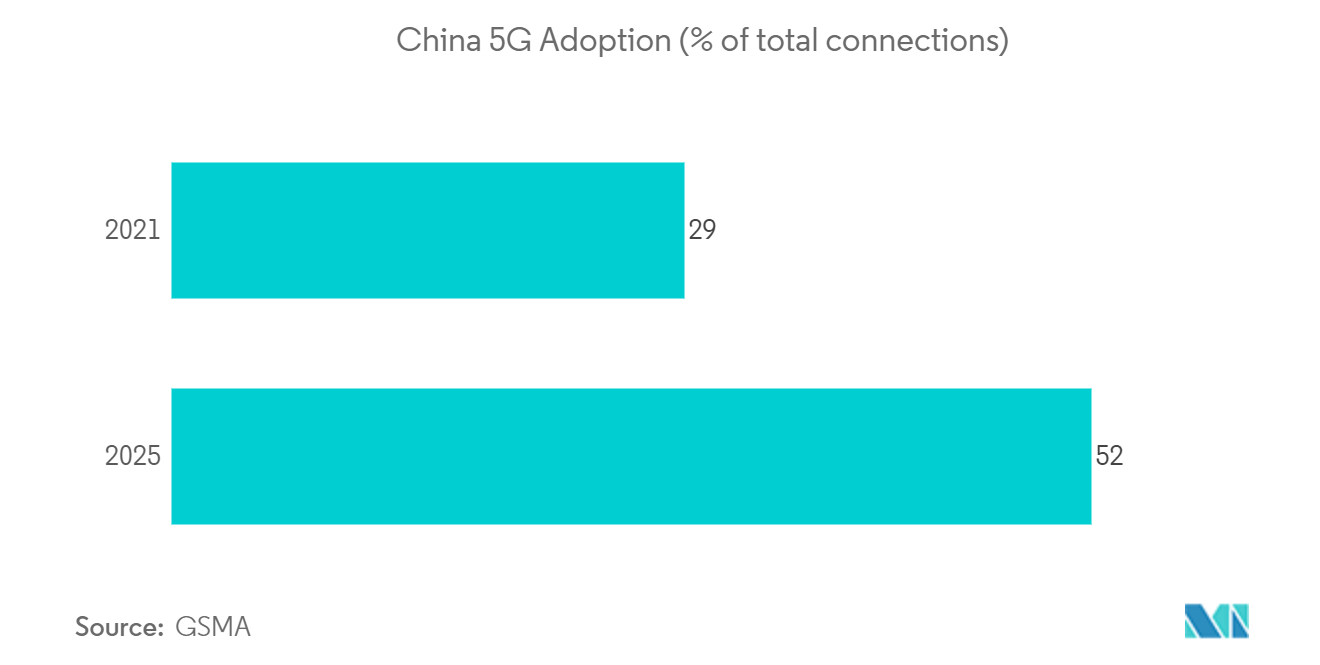
China Gaming Industry Overview
The Chinese gaming industry is competitive, owing to the presence of many small and large players in the market. The market is moderately concentrated. The market's major players adopt strategies like product innovation, service innovation, mergers, and acquisitions to stay ahead of the competition and increase their reach.
- In August 2022, Tencent Holdings and NetEase expanded their investments in overseas studios, with the former taking a share in Japan's FromSoftware Inc, the producer of the blockbuster action game "Elden Ring."
China Gaming Market Leaders
-
Tencent Holdings Limited
-
NetEase, Inc.
-
37 Interactive Entertainment
-
Beijing Kunlun Technology Co. Ltd.
-
Perfect World Games
- *Disclaimer: Major Players sorted in no particular order
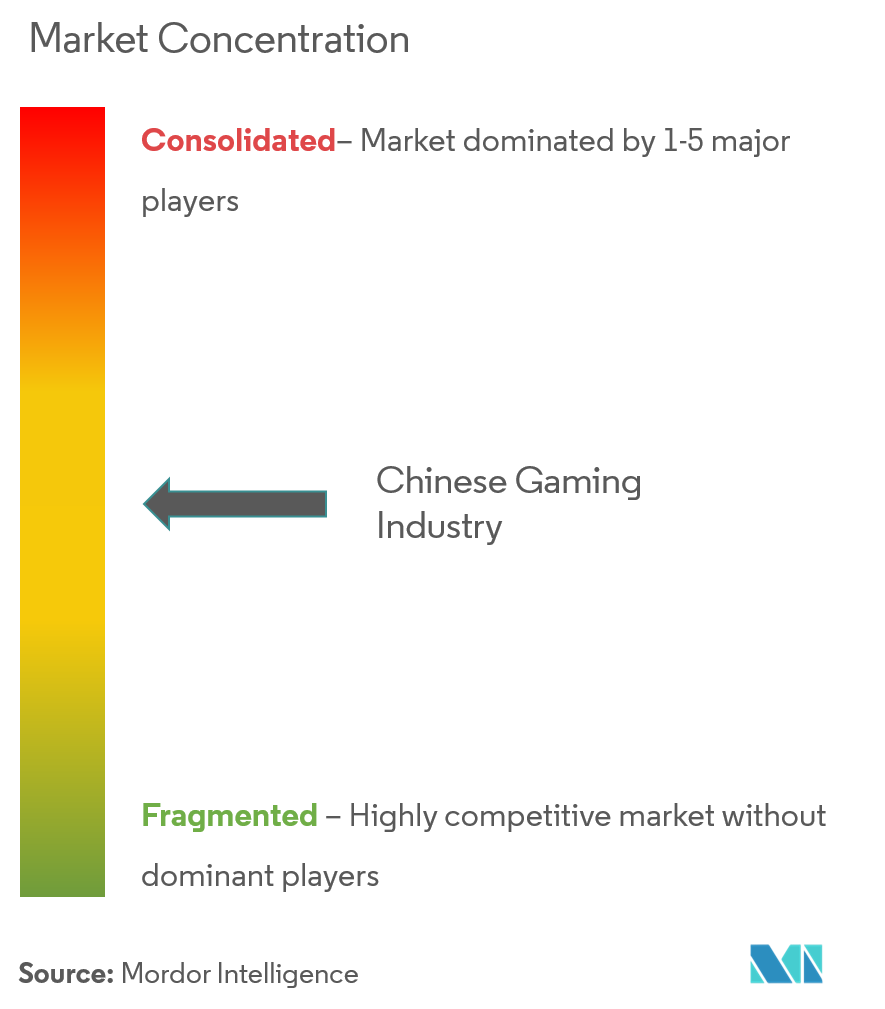
China Gaming Market News
- September 2022: Tencent Holdings and NetEase, two of China's largest video game companies, got approval to launch new paid games for the first time since July last year, indicating Beijing's relaxation of a two-year crackdown on the tech sector. Seventy-three online games, including 69 mobile games, were given publishing licenses by the National Press and Publication Administration. Licenses were also granted to CMGE Technology Group., Leiting, XD Inc, and Zhong Qing Bao.
- August 2022: NetEase Inc., a Chinese internet and online gaming services company, announced the acquisition of Quantic Dream SA, an independent video game developer, by its games division, NetEase Games. Quantic Dream will remain separate, focused on producing and releasing video games across all platforms and supporting and publishing third-party created products while using NetEase's enormous game development skills.
China Gaming Industry Segmentation
Chinese gaming is defined as playing electronic games conducted through multiple means, such as computers, mobile phones, consoles, or other mediums altogether. There is an increasing prevalence of high-speed internet connections, especially in emerging economies, making online gaming practical for more people in recent years. The research scope encompasses segmentation by gaming types, such as consoles, PC browsers, and mobile games.
The market sizes and forecasts are provided in terms of value (USD million) for all the above segments.
China Gaming Market Research FAQs
How big is the Chinese Gaming Market?
The Chinese Gaming Market size is expected to reach USD 71.18 billion in 2025 and grow at a CAGR of 7.63% to reach USD 102.80 billion by 2030.
What is the current Chinese Gaming Market size?
In 2025, the Chinese Gaming Market size is expected to reach USD 71.18 billion.
Who are the key players in Chinese Gaming Market?
Tencent Holdings Limited, NetEase, Inc., 37 Interactive Entertainment, Beijing Kunlun Technology Co. Ltd. and Perfect World Games are the major companies operating in the Chinese Gaming Market.
What years does this Chinese Gaming Market cover, and what was the market size in 2024?
In 2024, the Chinese Gaming Market size was estimated at USD 65.75 billion. The report covers the Chinese Gaming Market historical market size for years: 2022, 2023 and 2024. The report also forecasts the Chinese Gaming Market size for years: 2025, 2026, 2027, 2028, 2029 and 2030.
Our Best Selling Reports
China Gaming Industry Report
The China Gaming Industry is witnessing unprecedented growth, establishing itself as a global powerhouse. The industry's market size is expanding rapidly, driven by the popularity of eSports, social mini-games in apps like WeChat, and significant digital transformation efforts enhancing production efficiency. The advent of cloud gaming, powered by investments and modern cable network technologies like DOCSIS 3, is set to be the fastest-growing sector. Moreover, the mobile gaming segment leads in downloads and revenue, supported by expanding free Wi-Fi and smartphone penetration.
The industry trend shows a diverse market with strategic mergers, acquisitions, and partnerships shaping the competitive landscape. The market share of various segments is also evolving, with digital innovations playing a crucial role in market growth. The industry's statistics and market statistics provide a comprehensive overview of the current scenario and future prospects.
For detailed insights, Mordor Intelligence™ offers a comprehensive analysis of the China gaming market share, size, revenue growth rate, and a forecast outlook. This industry report is available as a free report PDF download, offering valuable information for stakeholders. The market report highlights the dynamic evolution and lucrative opportunities within the gaming in China, poised for future advancements.
The industry's growth rate and market growth are significant indicators of its potential. The industry analysis and industry overview provide a deep dive into the factors driving this growth. The market overview and market trend further elaborate on the industry's trajectory. The industry's outlook and market outlook suggest a promising future, with continuous advancements and expansions.
The industry research and market research are essential for understanding the competitive dynamics and strategic initiatives within the market. The industry forecast and market forecast offer predictions on future developments and trends. The industry's information and market value are crucial for stakeholders to make informed decisions.
In conclusion, the China gaming industry is thriving, driven by digital innovations and market expansions. The industry's size and market segmentation highlight its vast potential. The industry's statistics and market statistics underscore the significant growth and opportunities within the sector. The industry reports and market reports provide a comprehensive analysis of the current and future landscape. The industry's trends and market trends indicate a promising future for the gaming industry in China.



